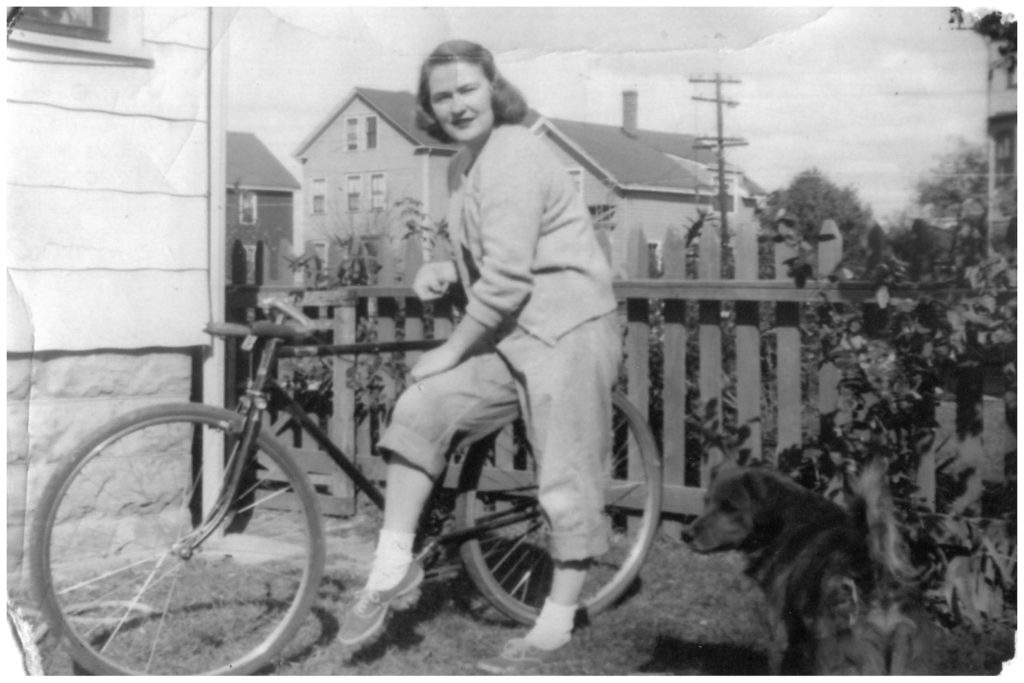I decided to pursue the bicycle as my object for this historical geography of childhoods project because I wanted to uncover how bicycles shaped the everyday geographies of children growing up in the late 19th and early-mid 20th century.
I wanted to explore the following questions – What was the experience of cycling for children growing up in this time period? Were bicycles accessible for children of all races, ethnicity, and social classes? How did the bicycle shape social movements, patterns of urbanization and immigration, and notions of national identity at the time?

My Nana, Sonja Elizabeth Bury, around 1948-1950, in East Providence, RI. She was about 16-18 years old. According to my Aunt, this was most likely a three-speed bike and my Nana rode it everywhere with her friends.
By examining the historical geographies of American children between 1850 and 1950 through bicycles/ cycling, we can begin to examine how social inequalities, mobility/lack of mobility, and national identities manifested themselves through the built landscape and societal movements. As mass auto-mobilization increased in the late 19th and early 20th century, the bicycle became a commonplace vehicle for those who did not have access to automobiles – largely children, minorities, and women- and allowed these individuals a cheap, efficient, and convenient way to navigate their everyday geographies. As bicycle models progressed and mass production allowed a larger proportion of America to afford these newer models, the practice of cycling became a social action and a way to engage in cultural politics. Who rode bicycles determined who was ‘mobile’, ‘independent, ‘masculine’, and ‘self-sufficient’. And children were right in the thick of it. As the primary audience for bicycles shifted from wealthy, elite men to lower class individuals and children, the lived experience of navigating through one’s everyday space was dramatically altered.
